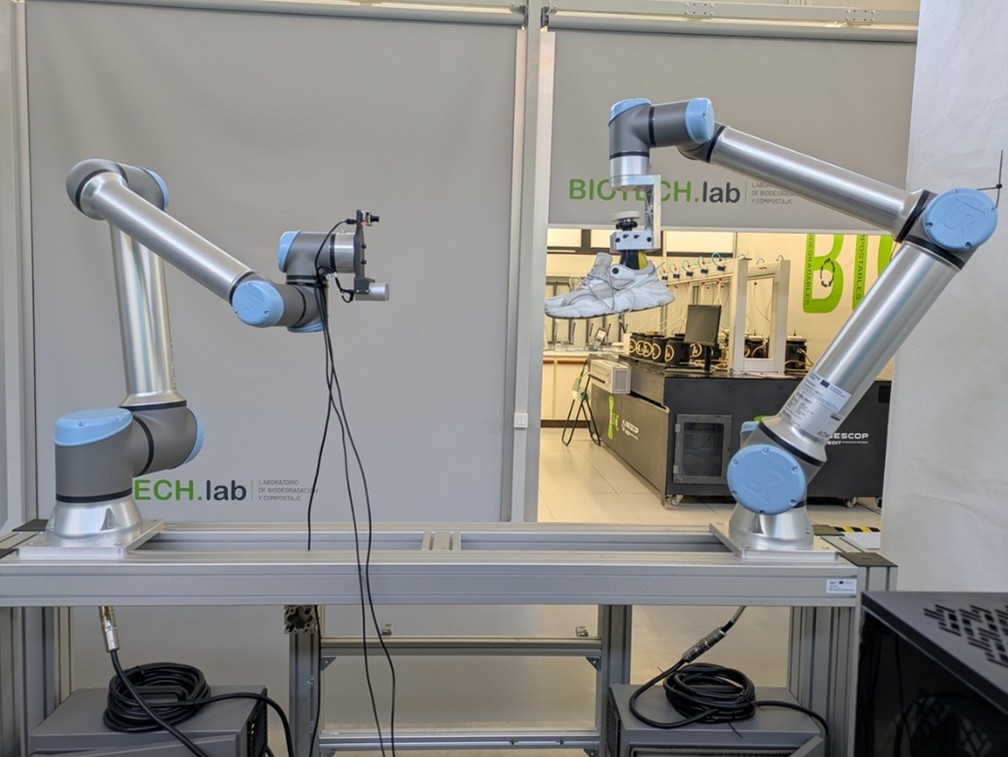On November 6th, the partners of the REMAIN project held a new online follow-up meeting focused on reviewing the technical progress achieved within each working group (WG) and coordinating the next milestones. The meeting allowed the consortium to share significant updates regarding robotic perception and control, the creation of the damage dataset for footwear and textiles, the upcoming local trials, and the development of the Ecodesign Guide, as well as to review ongoing communication and dissemination activities.
During the session, coordinated by Inescop – the project leader – partners presented the latest developments of the tools that will enable the identification of damages in used products and the assessment of their potential for remanufacturing. Among the most noteworthy advances was the improvement of the robotic vision cell, with the integration of a lighting system that allows the capture of higher-quality and more reliable images to assess product condition. Additionally, progress was reported on the tactile dataset, which gathers various types of signals obtained through contact sensors when detecting defects. Both resources will be key to training artificial intelligence systems capable of more accurately recognizing different types of damage.
The meeting also focused on robotics progress, both in terms of perception and control. Partners explained the benefits brought by the integration of new advanced vision sensor technologies and tracking tools, which enhance the robots’ ability to manipulate flexible objects, such as fabrics or footwear components. These developments will help robotic systems adapt more effectively to material variability and work with greater safety and precision. Moreover, advances in tactile sensing now enable the detection of edges, seams, and other relevant product elements during automated handling.
In parallel, the consortium presented progress on the study of recurrent damages and possible solutions, as well as on the Ecodesign Guide, a key deliverable within WG3 that will compile practical recommendations for designing more durable, sustainable, and repairable products. Within this activity, partners are collecting legislative and sectoral information from companies in various industries to better understand their current situation regarding EU ecodesign regulations, identify their main needs, and detect areas where uncertainties or information gaps remain.
The communication and dissemination activities, presented by FICE and AIDA, reviewed recent activity on social media, the compilation of scientific publications from technical partners, and the project’s presence at various international fairs and events. The planning of major milestones for 2026 was also discussed, including participation in major industry trade shows and the EU Green Week. In addition, partners highlighted their attendance at congresses, conferences, and specialized meetings, which are considered essential for strengthening the project’s network, creating synergies with other European initiatives, and sharing REMAIN’s progress with experts and interested organizations.
The consortium concluded the meeting by setting the priorities for the coming months, including advancing on the expected results, continuing the development of the project’s tools, and maintaining close coordination among all partners.
Project partners
The REMAIN project is coordinated by INESCOP – Footwear Technology Centre, with the participation of the Universities of Zaragoza, Alicante, Coimbra, and Clermont Auvergne INP; the Federation of Spanish Footwear Industries (FICE); and the companies SMA-RTY, Automática y Control Numérico S.L., and AIDA CCI, with the social association Proyecto Lázaro acting as a collaborating partner.

